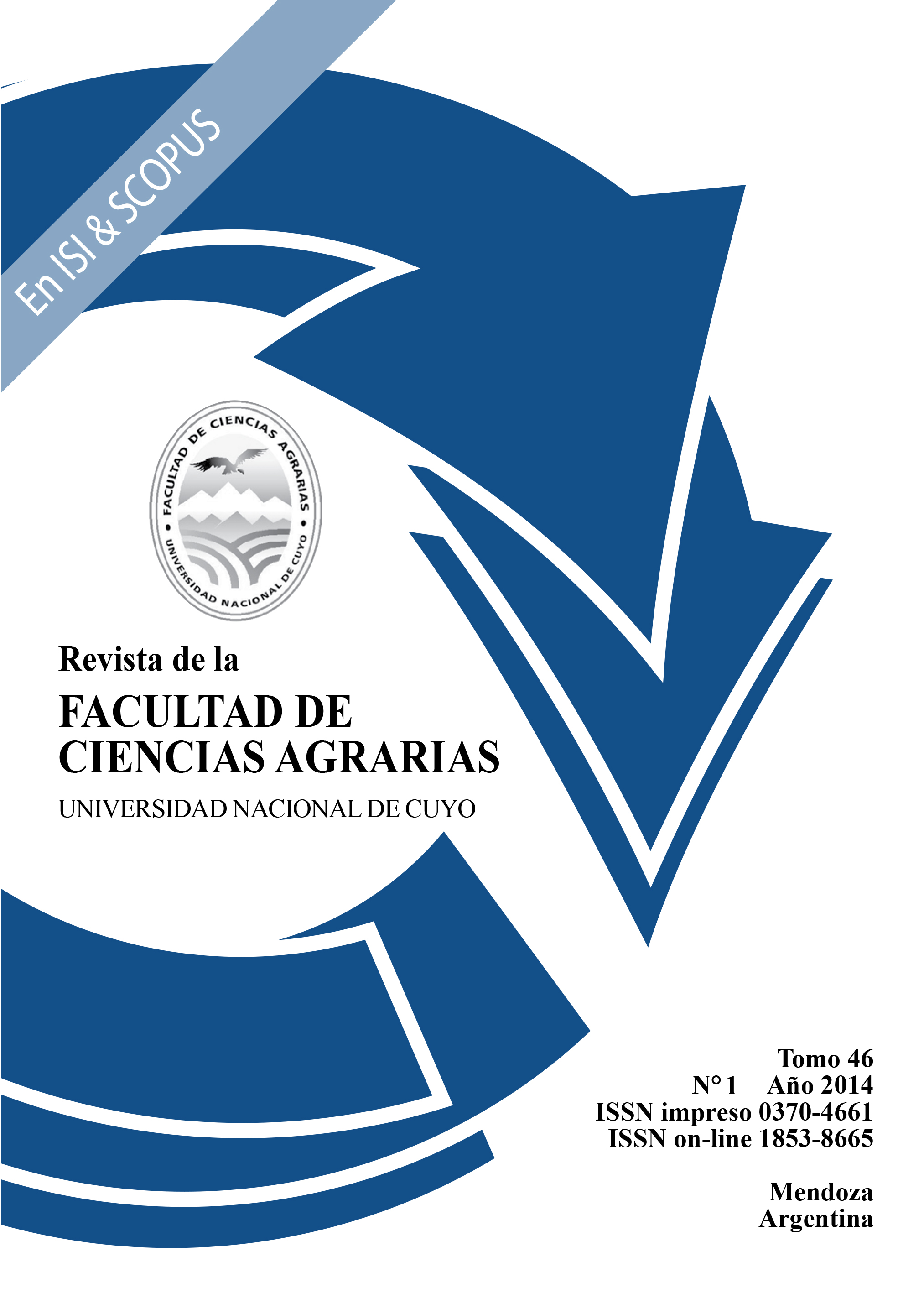Numerical variations of Diaphorina citri Kuwayama (Sternorrhyncha: Psyllidae) and the Ectoparasitoid Tamarixia radiata (Waterston) (Hymenoptera: Eulophidae) in a orange grove of Entre Ríos, Argentina
Keywords:
Diaphorina citri, sweet orange, parasitoid, Tamarixia radiata, citrus, Entre RíosAbstract
Diaphorina citri is a vector of the bacterium that produces the HLB disease in citrus, one of the most destructive. In commercial plantations of sweet orange in Entre Ríos analyzed spatialtemporal abundance of D. citri adults and the ectoparasitoid Tamarixia radiata. Fortnightly and in three successive years we collected adults with 10 yellow sticky traps, and data were related to the mean shooting percentage from another plantation. The number of D. citri/trap/ fortnight was analyzed by Kruskal-Wallis and the Mantel test and the aggregation response of T. radiata by correlation. Both populations exhibited greater abundance in the first year: frequent abamectine applications in the second and third years produced a marked abundance reduction. Spatially, D. citri dissimilarity between trees was not associated with their distance, but correlation between the number of D. citri/ trap was significant. Chronologically D. citri exhibited four peaks of abundance associated with winter, spring and summer flush. The greater T. radiata abundance occurred in those trees with greater D. citri abundance, and both species were spatially correlated. The anti clock-wise spiraling in D. citri - T. radiata diagram in single trees suggests a host- parasitoid interaction, structured as local populations.
Downloads
Published
Issue
Section
License

This work is licensed under a Creative Commons Attribution-NonCommercial-ShareAlike 3.0 Unported License.
Aquellos autores/as que tengan publicaciones con esta revista, aceptan las Políticas Editoriales.




